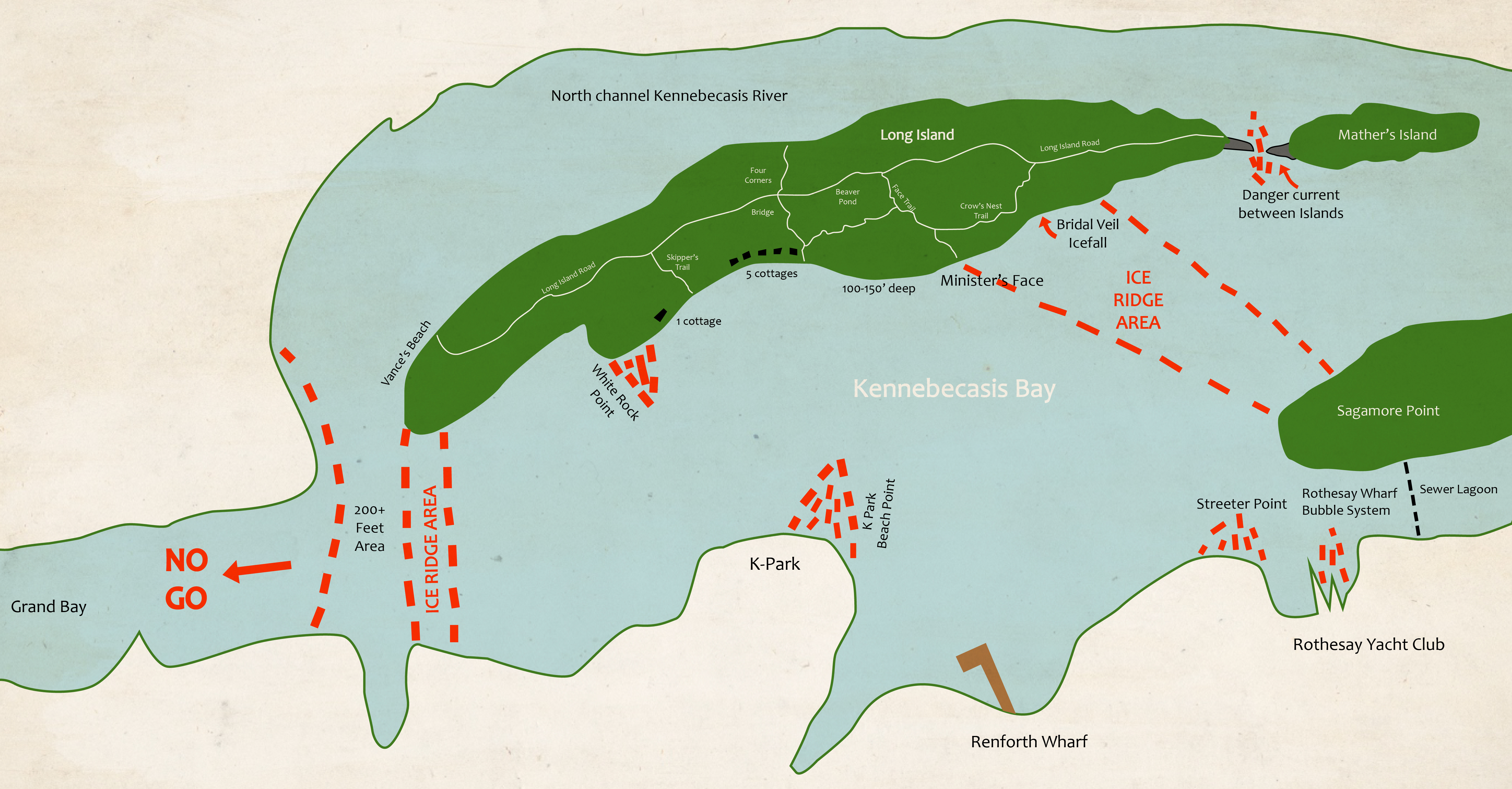Posted by Kirsten on 2022 Feb 26th
8 Tips for Ice Safety on the Kennebecasis River in the Winter
We are nearing the end of the winter season but it is ALWAYS important to keep safety top of mind when travelling on the ice playground that we are so lucky to have in our backyards. It is arguably one of the best parts about our winters! Cross Country Skiing, Hiking, Skating and access to the beautiful Long Island are among the fun to be had.
Regardless of when or how you choose to enjoy the winter dreamland, safety must always come first. Below, we have outlined some tips so you can navigate the Kennebecasis River (or your local body of water) with confidence, in the winter.
Here are 8 safety tips to keep in mind:
1. Know the Area
Specific to our area, the Kennebecasis River has some well known spots that should be avoided any time of the ice season. If you are unfamiliar, make sure to enjoy the ice with friends who know the area. Below is an adapted map from a hand drawn map that Ted Harley created for the Rothesay Fire Department to "try and help them understand the River during their calls." It highlights the dangerous areas to be avoided even at the best of times.

2. Buddy Up
Not only is it more safe to experience with a friend - it's more fun too. We recommend keeping Ted Harley at the top of your friend list for this reason.
3. Thickness Matters
Ice needs to be at least 4" thick for walking and it rarely will freeze uniformly. Even if it is thick enough in one area, another location may not be safe. When in doubt, stay off the ice. The minimum ice thickness for clear, hard ice is represented splendidly below - in case you have been wondering how thick it needs to be for you, or figure skating Bigfoot, to enjoy.

4. New Ice is better than Old Ice
Partially thawed, old ice may not hold up as strong as fresh ice. In other words, treat each outing with the same caution and don't get too comfy because it was okay a few days ago.
5. Don't Go With The Flow, Bro
Ice formed over moving water or near river bends is not trustworthy as the waterflow weakens any ice that forms. It's best to avoid the ice where there are known currents. Ice near the shore is also generally weaker than ice further out.
6. Let It Sing To You
Noises from the ice (i.e. cracking or booming) are usually the result of ice expanding and contracting and doesn't typically mean danger. Although it can give you the heebeejeebies, if the ice passes the other tests - you can take a breath and enjoy the sounds of nature.
7. Be Cautious with the White Fluffy Stuff
In this case, we are referring to snow. Due to its insulating effect, snow slows the freezing process. Since it also adds weight, that beautiful powder may limit how much additional weight the ice can support.
8. The Right Tools
In the event of the ice breaking, a couple tools could make a huge difference in getting out safely. It is recommended to wear a flotation jacket and ice picks around your neck. People will also take hiking poles or a hockey stick to aid in an emergency.
Spending your time on a frozen river, or lake, or pond is quintessentially Canadian so we hope you continue to enjoy it - safely and confidently.
REFERENCES
https://twitter.com/thewrightpage/status/136382679...

